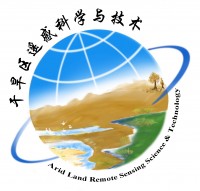Research on Vegetation Coverage Dynamics and Prediction in the Taitema Lake Region
2022
期刊
Water
下载全文
The Tarim River is the largest inland river in China, which plays a crucial role in maintaining regional ecological security and carbon cycle/dynamic. However, the “green corridor” in the Taitema Lake region at the lower reaches of the Tarim River has unclear environmental changes and future dynamics due to the influence of the ecological water conveyance. Hence, protecting the “green corridor” at the lower reaches of the Tarim River in China is strategically important not only ecologically but also socially and economically. In this paper, the temporal and spatial features of the fractional vegetation coverage (FVC) dynamics in the Taitema Lake region at the lower reaches of the Tarim River in 2000–2018 are analyzed and calculated using Landsat TM/OLI remote sensing images and MODIS data products. Additionally, the future trend of FVC dynamics in the study region are predicted using trend analysis and the pixel-based Hurst index. The results show that FVC in the Taitema Lake region exhibit a positive development after the implementation of ecological water conveyance. Specifically, from 2000 to 2018, the areas of low, medium, and high FVC expanded from 1.28 km2 to 179.87 km2, resulting in an increase of 140.52%. Spatially, the regions around the lake entrance channel of the Tarim River saw a significant increase in FVC of 9.71%. The middle part of the study region, accounting for only 1.96% of the area, displayed relatively high and high fluctuations in FVC. In the future, the regions at the middle part of the lake and around the lake entrance channel of the Tarim River, accounting for 11.33% of the area, will likely show an increasing trend in FVC. The regions with either extremely low or low FVC are predicted to decrease to 14.16% of the overall area. Because the positive effects of ecological water conveyance were more significant on FVC in the study region than the influences of either temperature or precipitation, ecological water conveyance should remain the primary means of ecological restoration for Taitema Lake.
